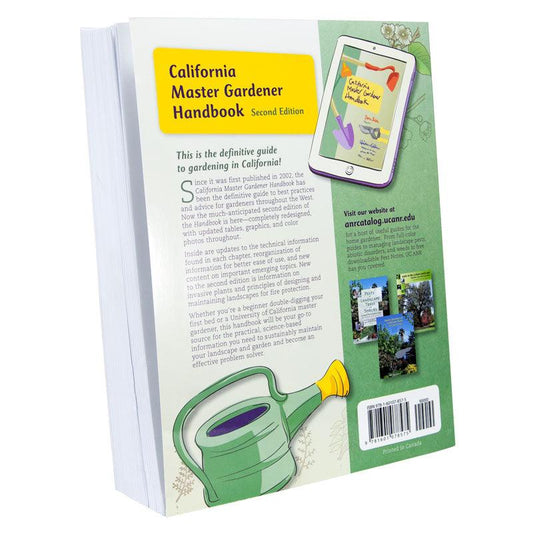The Value of Latin Names for Plants: Why They Matter
As a gardener, you might wonder why knowing the Latin names of plants is important. Isn’t it enough to call a plant by its common name? Whether you’re growing Brassica oleracea (cabbage) or Zea mays (corn), understanding Latin names—or binomial nomenclature—can greatly enhance your gardening experience. These names reveal relationships between plants, help with crop rotation, and ensure you’re buying or planting the correct species.
How Latin Names Work
Latin names, or binomial nomenclature, consist of two main parts:
- Genus: The first word in the name, identifying a group of closely related plants.
- Species: The second word, specifying the individual plant within that group.
For example, in Brassica oleracea, Brassica is the genus that includes cabbage, broccoli, and cauliflower, while oleracea specifies the cabbage plant itself. Additional descriptors like subspecies or variety may sometimes be included.
This naming structure is akin to a family tree. Just as a last name links family members, a genus name links related plants, allowing gardeners to recognize similarities in appearance, growth habits, or care requirements.
Why Latin Names Are Helpful
1. Crop Rotation Planning
Latin names make crop rotation easier by identifying plants from the same family. Rotating crops reduces the risk of pests and diseases, which often target plants within the same genus or family.
For instance, if you grew cabbage (Brassica oleracea) last year, you’ll know to avoid planting other brassicas like cauliflower or kale in the same spot this year. Using Latin names allows you to identify these relationships quickly.
2. Avoiding Confusion
Many plants have multiple common names, or the same name may refer to different plants in various regions. For example:
- "Corn salad," "lamb's lettuce," and "mâche" all refer to Valerianella locusta.
- The term "daisy" might mean Bellis perennis in one area and Leucanthemum vulgare in another.
Cross-checking Latin names ensures you’re getting the exact plant you want.
3. Understanding Plant Characteristics
Latin names often describe physical traits, habitat, or uses, offering insights into what to expect. For instance:
- Rosa alba (white rose) tells you the flower color.
- Lavandula angustifolia (narrow-leaf lavender) hints at the plant's foliage shape.
- Echinacea purpurea (purple coneflower) describes its vibrant bloom.
Knowing these meanings can guide your choices when selecting plants for specific purposes or conditions.
It’s All Greek, er, Latin to Me
A species name may indicate where the plant came from, who discovered it, or something about the plant that is useful to know such as what it will look like in your garden or what growing conditions it prefers. Here’s some common Latinized descriptions to look for:
Color descriptions
This may refer to any part of the plant but most commonly describes the flower. Alba = white Pallida = pale or cream colored Negra = black Rubra = red Coccinea = red Punica = red Sanguinea = blood-red Purpurea = dark pink Phoenicea = purple Rosea = rose-pink Argentea = silvery Aurantiacav = orange Aurea = golden or yellow Chrysantha = yellow Flava = yellow Lutea = yellow Viridis = green Azurea = blue Caerulea = blue Splendens = “splendid,” vibrantly colored 
Leaves
Angustifolia = narrow Tenuifoia = narrow Digitata = lobed Lanceolata = lance-shaped Pinnata = pinnate Rotundifolia = round Latifolia = wide Longifolia = long Macrophylla = large Microphylla = small Parvifolia = small Millefolia = “thousands of leaves”, abundant leaves Polyphylla = abundant leaves Paucifolia = few leaves 
Flowers
Campanulata = bell-shaped Pendula = hanging Umbellata = flower cluster is an umbel Foetida = has a bad odor Odorata = has a good odor Grandiflora = large flowers Macrantha = large flowers Parviflora = small flowers Micrantha = small flowers Densiflora = dense-flowered Flora plena = double-flowered Longiflora = long flowers Multiflora = many flowers Pauciflora = few flowers
Habitat/growing conditions Arvensis = in fields Campestris = in fields Lacustris = of lakes Maritima = coastal, near the sea Montana = in mountains Palustris = in marshes Rupestris = in hills Saxatilis = in rocky areas Sylvestris = in woods and forests Alpina = from alpine regions
Season:
(usually referring to bloom time) Praecox = early spring Vernalis = spring Autumnalis = autumn Hyemalis = winter
Other characteristics of note:
Macrorrhiza = large roots Majus = larger Minor = smaller Pygmaea = small Glabra = smooth Hirsuta = hairy Villosa = hairy Spicata = spiked Spinosa = spiny Maculata = spotted Nana = small Pumila = small Vulgaris = common Edulis = edible Esculenta = edible Officinalis = traditional herbal medicine Annua = annual Perennis = perennial You might notice as you look at more scientific names of plants that some words look similar but with a different ending.
Practical Uses of Latin Names
1. Shopping for Plants
When searching for specific plants, relying on Latin names eliminates confusion caused by regional or colloquial common names. Whether you’re buying seeds, bulbs, or potted plants, cross-referencing the Latin name ensures accuracy.
For example:
- If you want French heirloom Valerianella locusta, knowing its Latin name can help you identify it even if it’s labeled as “corn salad” or “mâche.”
2. Understanding Plant Families
Knowing the genus helps you group plants with similar care needs. For instance, most members of the Brassica genus thrive in cooler temperatures and benefit from similar soil conditions.
3. Enhancing Garden Knowledge
Learning Latin plant names can deepen your understanding of gardening. These names often reflect the plant’s history, origin, or unique characteristics, giving you a richer appreciation of your garden’s diversity.
Fun Facts About Latin Names
- Many plant names honor historical figures or botanists. For instance, Kalmia latifolia (mountain laurel) is named after Pehr Kalm, a Swedish botanist.
- Some names reference mythology. Narcissus poeticus, a type of daffodil, is named after the mythological figure Narcissus.
- Latin names often hint at the plant’s origin. Campanula maritima grows in coastal areas, while Rhododendron montanum is found in mountains.
Resources for Learning Latin Names
To become more familiar with Latin plant names, consider these resources:
-
Books:
- Botanical Latin by William T. Stearn
- The Gardener's Botanical: An Encyclopedia of Latin Plant Names by Ross Bayton
-
Online Databases:
- The International Plant Names Index (IPNI)
- Royal Horticultural Society Plant Finder
These tools can help you decode names and explore the fascinating world of botanical nomenclature.
Final Thoughts
Latin names for plants are more than just scientific labels—they are a gardener’s guide to understanding plant relationships, characteristics, and care requirements. By learning even a few common terms, you’ll gain a deeper appreciation for your garden and make more informed decisions about what to grow. Whether you’re planning crop rotations, searching for specific species, or exploring plant families, Latin names provide clarity and insight.






